On November 29, 1483, a priest and lawyer born in Strasbourg acceded to the position of Master of Ceremonies of the papacy in Rome, after having purchased the post for about 450 ducats. His name was Johann Burchard and until his death in 1506 he would serve five pontiffs in that capacity.
A few years earlier, in 1503, Burchard had a palace built, which is still standing on what is now the Vía del Sudario (at number 44) under the name of Casa del Burcardo , with an attached tower.
The tower, along with Burchard's birthplace, eventually gave the place where it stood its name:Torre Argentina. Argentina because the Latin name for Strasbourg was Argentoratum . Which would come to mean something like the Strasbourg tower .
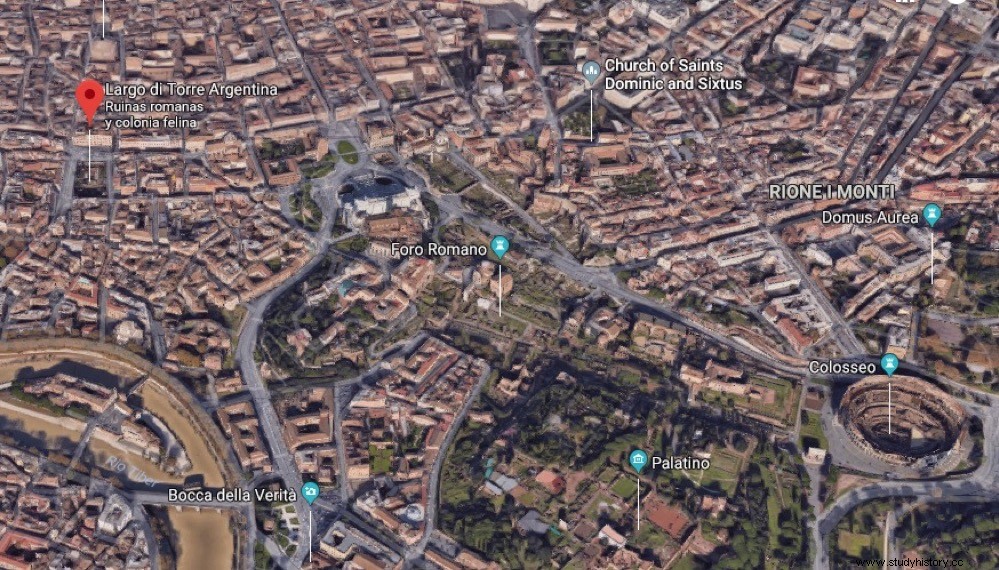
In 1927 the Roman authorities decided to demolish a large part of the constructions of Torre Argentina (including the Burchard tower) to create a large square, the current Largo di Torre Argentina , located in the old Champ de Mars on the road between the Pantheon and the Forum.
During the works, the head and arms of a statue of colossal proportions appeared, which led to archaeological excavations that, as is usual in the Italian capital, found more than expected:an entire sacred area with remains of four temples from the Republican Roman period, in addition to the Theater of Pompey.
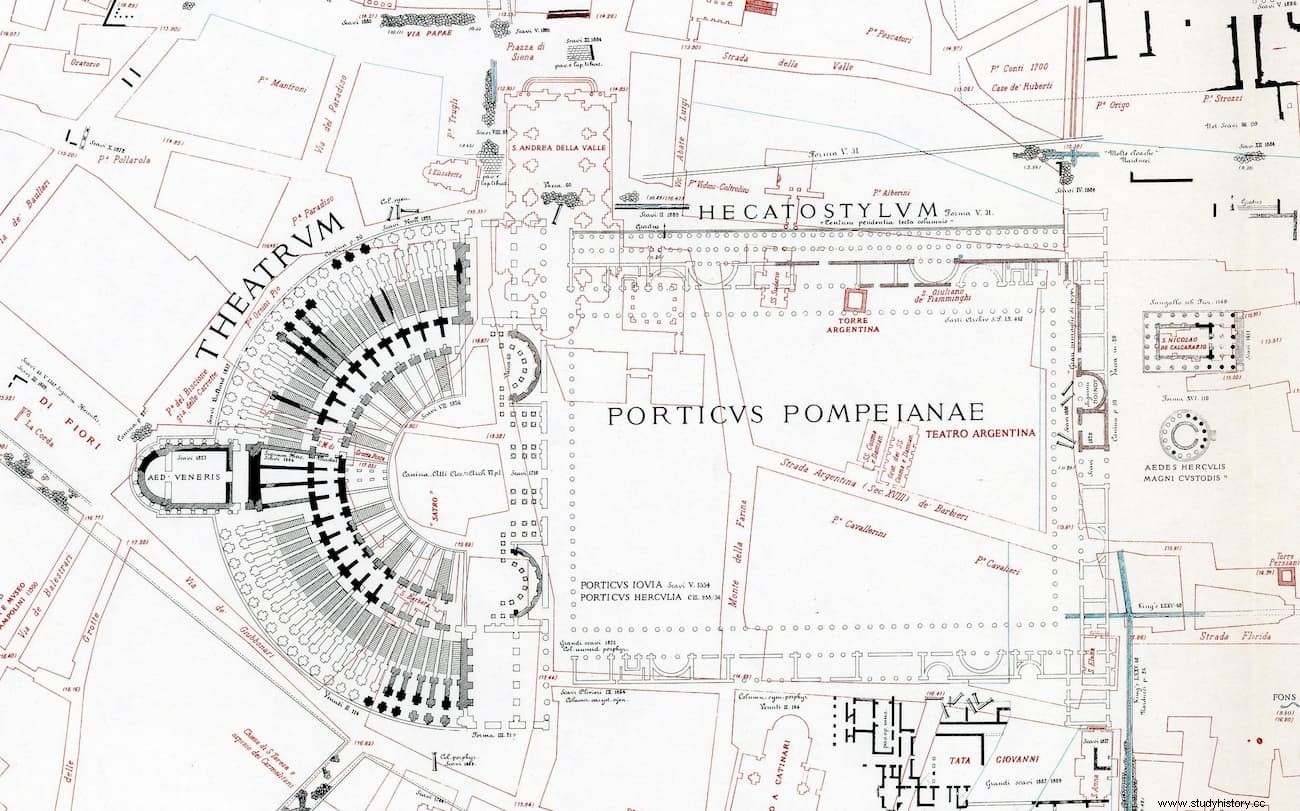
The theater was the first permanent one built in Rome (and the first all-marble building), in 55 BC, thanks to a trick by Pompey.
As it was forbidden to build permanent theaters in the city, he had a temple dedicated to Venus Victrix built on top of the cavea. , arguing that the cavea itself was nothing more than a stairway to access the temple.
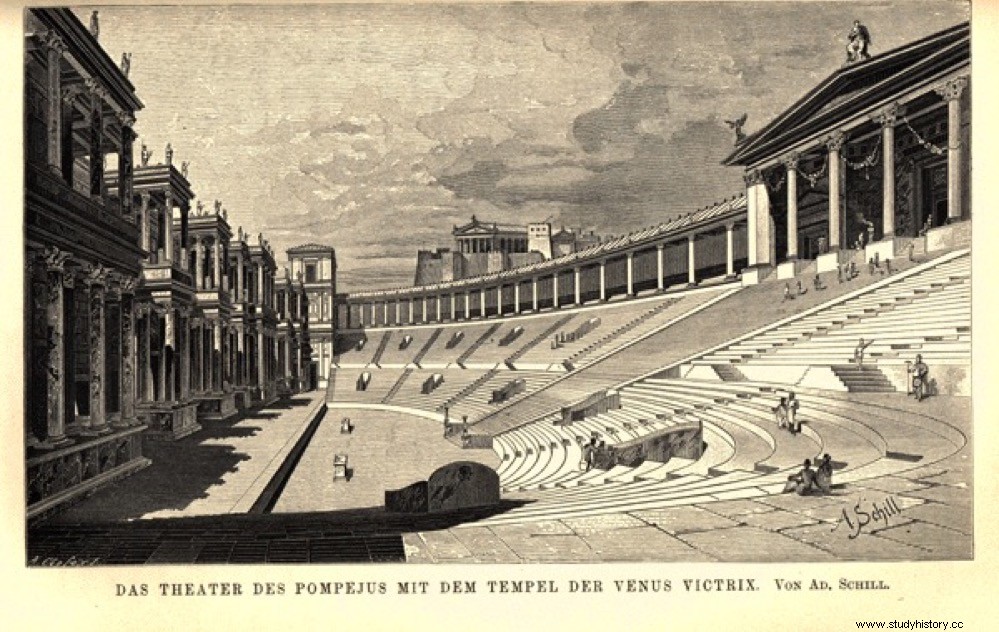
It was 150 meters in diameter and had a capacity for more than 17,000 spectators. Behind the scene was a huge portico 180 by 135 meters surrounding a garden, and at the end of this portico opposite the theater was Pompey's Curia.
A curia was a meeting to discuss public affairs, and in Republican times it also served to designate the building where the Senate met, generally the Curia Hostilia Located in the Forum. But there were others, like the one mentioned in Pompey, precisely the place where in March 44 B.C. the Senate was meeting.
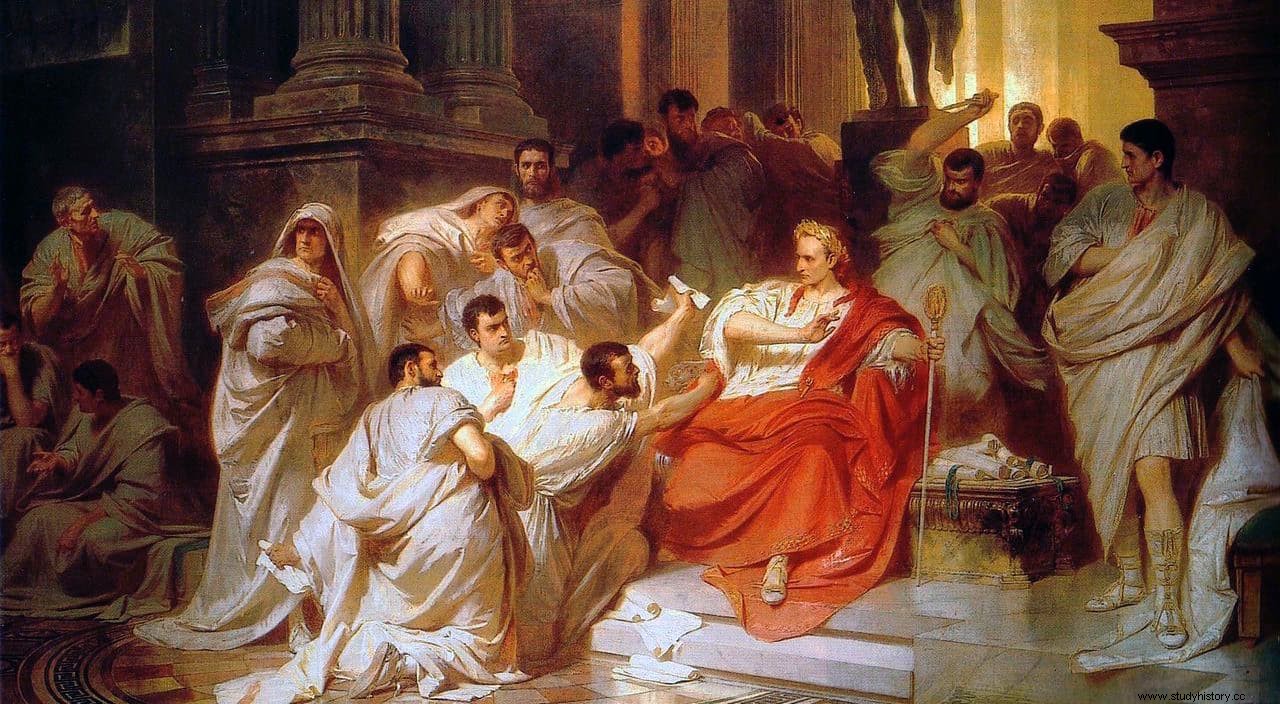
Julius Caesar went there on the 15th of that month to meet his death at the hands of a group of senators, as Plutarch and Suetonius tell us.
This curia, according to Suetonius and other authors, was subsequently walled up as a nefarious place. Possibly what they are referring to is the concrete structure three meters wide by two meters high with which Augusto had the place covered to mark it. Over time, the environment would be converted into public latrines.
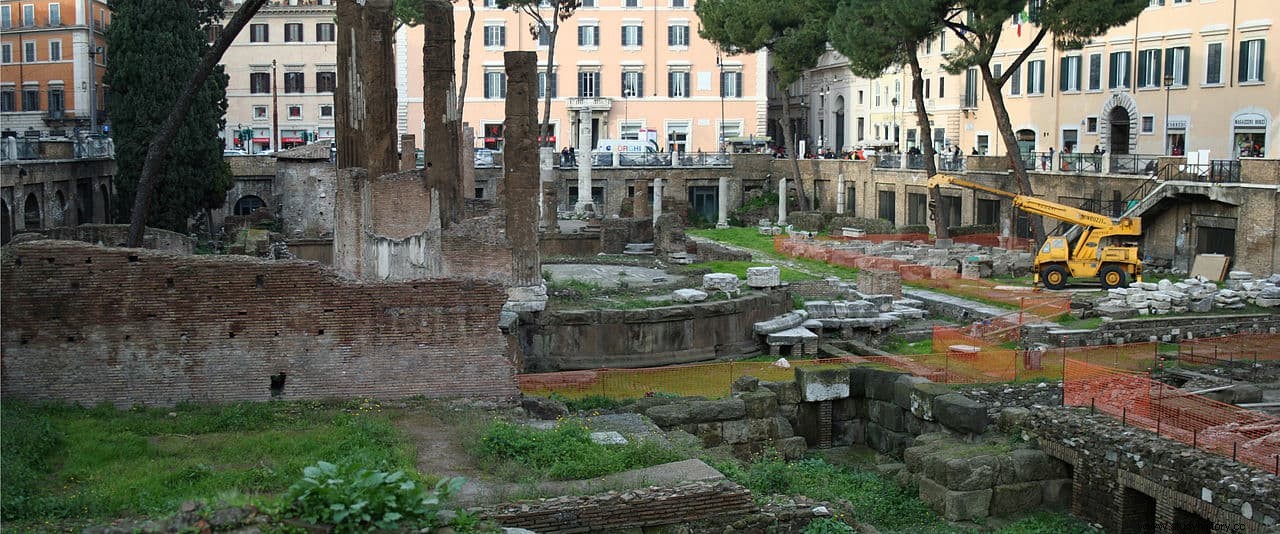
In today's Largo di Torre Argentina square you can see today the remains of the east side of the portico, as well as three of the four temples. Remains of Pompey's theater are in the basement of Via di Grotta Pinta, while the original vaults of the theater form the basements of the restaurants on this street and part of the walls of the Albergo Sole al Biscione hotel.
The exact point where Caesar fell, right in the center of the back of the curia, at the foot of the statue of Pompey, can be seen today in front of the remains of the temples, practically embedded under the pavement of the street.
